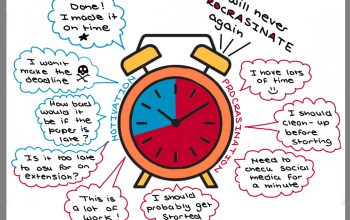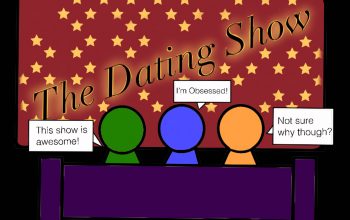On blackface, cultural appropriation, and the need for an open dialogue
Josh Scott – MANAGING EDITOR
In light of recent discussion regarding political correctness and its uses, I’ll start here: the American election has brought to the fore a fundamental problem with the way we speak to each other. Or rather, don’t.
In short, on any contentious issue, there’s a whole lot of semi-coherent shouting from both sides of the political spectrum. Neither seems to be a) hearing the other, or b) all that open to listening in the first place. Of this, almost all of us are guilty — myself included. Clearly, there needs to be more communication.
I can certainly see how those with controversial views on things like cultural appropriation might feel alienated by the entire discussion. After spending some time on a university campus — one that at least seems predominantly progressive — it becomes easy to forget that opposing views exist. Occasionally, when it comes to dissenting beliefs on topics like privilege, racism or cultural appropriation (issues concerning social justice, essentially) the academic atmosphere can be quite stifling; in the name of acceptance and equality, no less.
Personally, I don’t think it’s a matter of either/or. I don’t think that any stance on the topic need consist of a choice between two extremes. I don’t think that cultural appropriation must eitherbe bad or acceptable in all instances. This approach seems wrongheaded, and certainly hasn’t lent itself to any sort of meaningful dialogue.
Technically speaking, cultural appropriation exists. Cultures have traditional symbols that carry representative meaning particular to them, and outsiders wittingly or unwittingly adopt them in trivial ways. That is, people consciously or unconsciously appropriate them. To claim otherwise would be absurd. (Though, as a philosophy minor and forever fan of the underdog, I’d like to see someone effectively stake the claim that cultural symbols don’t exist or have significance on a practical level. Not whether they ought to; but whether they do.)
To clarify, cultural appropriation isn’t illegal. Instead, we’re in the realm of should you versus shouldn’t you, morality type stuff. So, the question becomes whether or not cultural appropriation is a problem. Some instances seem more obviously reprehensible than others. Take the drunk, drugged out music festivalgoer wearing a Native headdress because they find it fashionable. I’d like to think the argument that this person is “sharing in” and “appreciating” Native culture, here, falls as flat for you as it does for me.
Others are more complicated. What about yoga? Better yet, what about Harambe? I’m still trying to figure out how — as many poorly reasoned blog posts have claimed — Harambe jokes are inherently racist. Much of the Harambe movement (yes, movement) seems to derive pleasure from the sheer ridiculousness of itself. Moreover, its makeup appears much too diverse to group its members under the same umbrella. I’m aware of the ugly history of gorillas in popular culture. I know a portion of His followers (yes, followers) have used the name of the Great One (move over Wayne) in racist ways, but I struggle to see how the part speaks for the whole.
A nuanced approach might be more constructive. I’d question the extent to which accusations of cultural appropriation apply, asking questions like, What qualifies as cultural appropriation? and, To what extent is it wrong?
Blackface, however, is a different story. If you ignore its long history of use to reinforce caricatures of black people in minstrel shows, then it isn’t racist. But symbols don’t work that way. The meaning of symbol is built into its very nature. Put it this way, would you say that a cross has absolutely no association to Christianity? I mean, you could, but would you really think it true?
Racism still exists — thing is, it’s just less visible. That changes when you wear blackface. When you do, whether you intend to or not, you draw directly upon its lengthy symbolic history. Look up a list of stereotypical black characters. Sound familiar? This is thanks, in part, to things like blackface and minstrel shows.
On the whole, differing perspectives ought not be relegated entirely to the periphery. They should be challenged in the open. Forced to fester in the shadows, they become strong (like Harambe) in that they become deeply ingrained.
Either way however, if we want the other side to truly listen, we must not misrepresent their beliefs. Constructing and crushing convenient straw-person arguments is easy; having a thoughtful, open dialogue is hard. That is, in tackling complex arguments like these, we should seek out people like Professor Mary Nyquist and steer clear of hastily written blog posts. Otherwise, we risk missing the point entirely.
Generally speaking, in an age where filters abound, now more than ever seems the time to turn some off. Don’t unfollow or completely avoid the person whose social or political views you disagree with. If you can, engage them. I for one, am going to try. Let’s talk. Better yet, let’s have a reasonable discussion.



